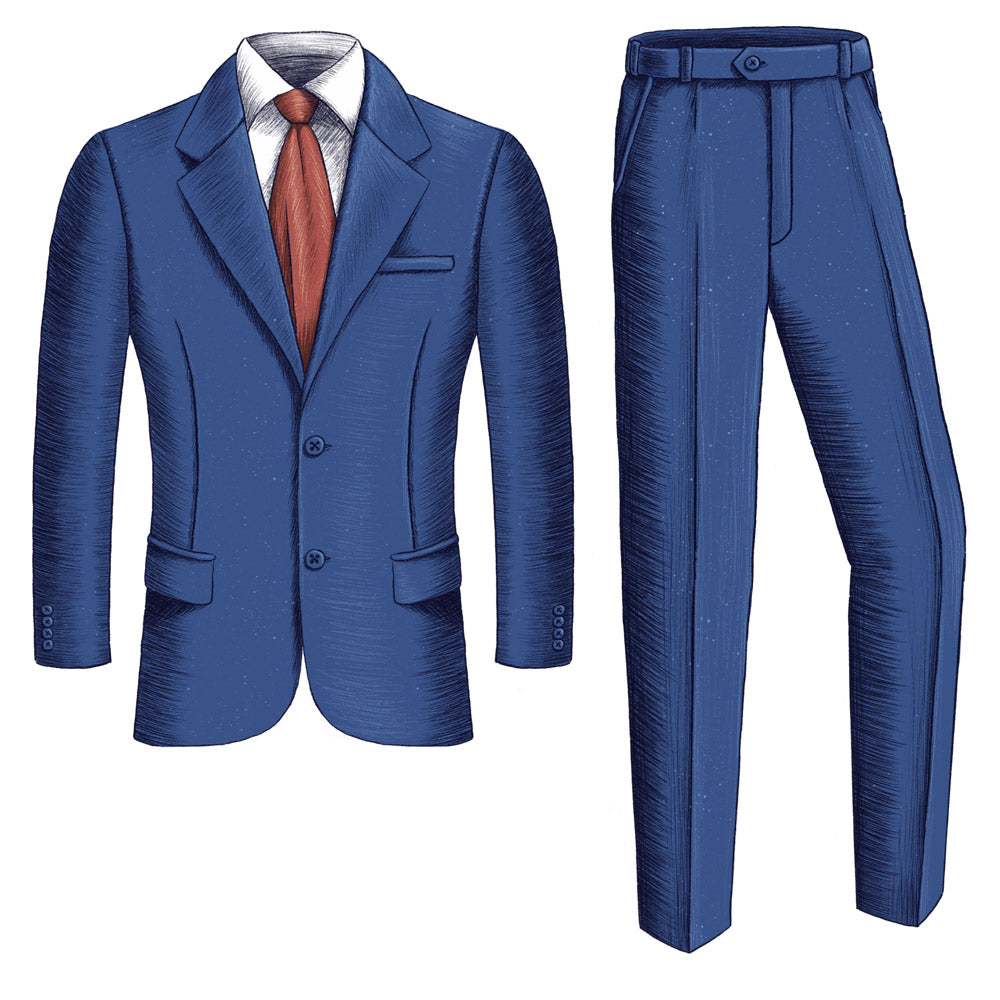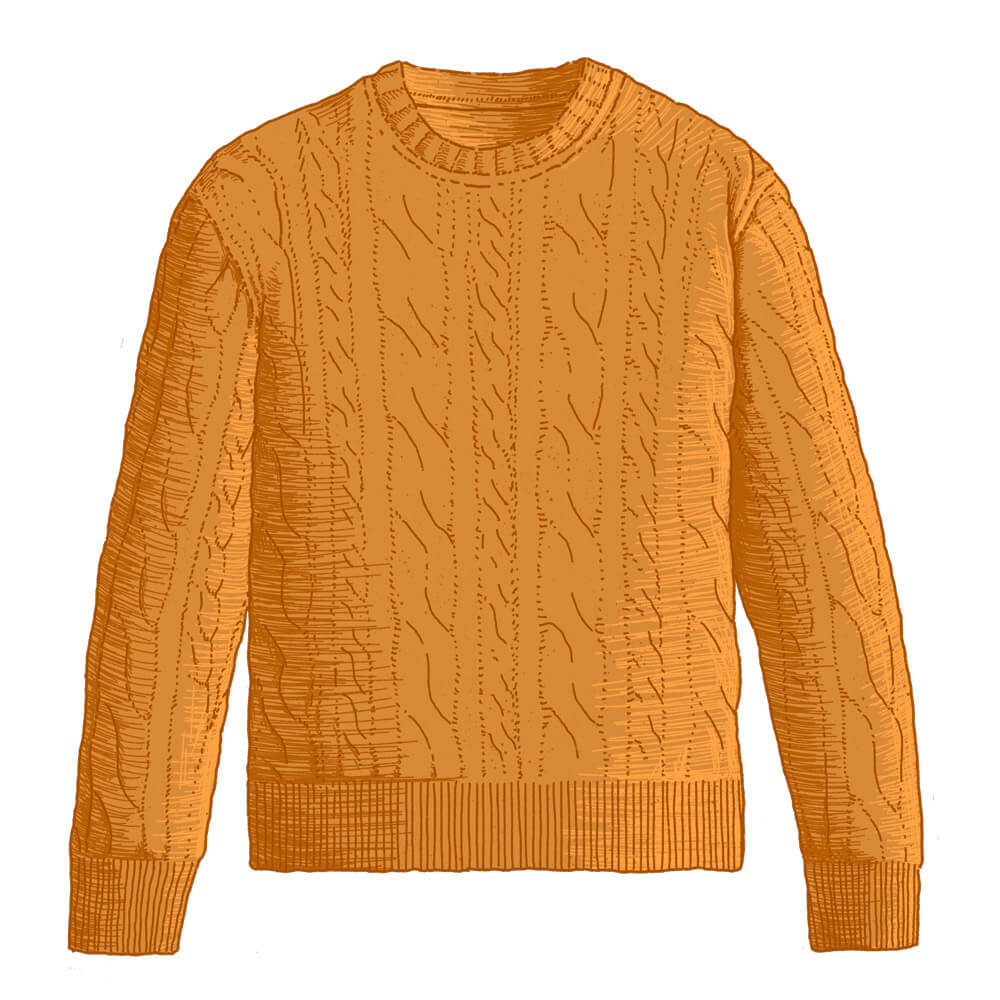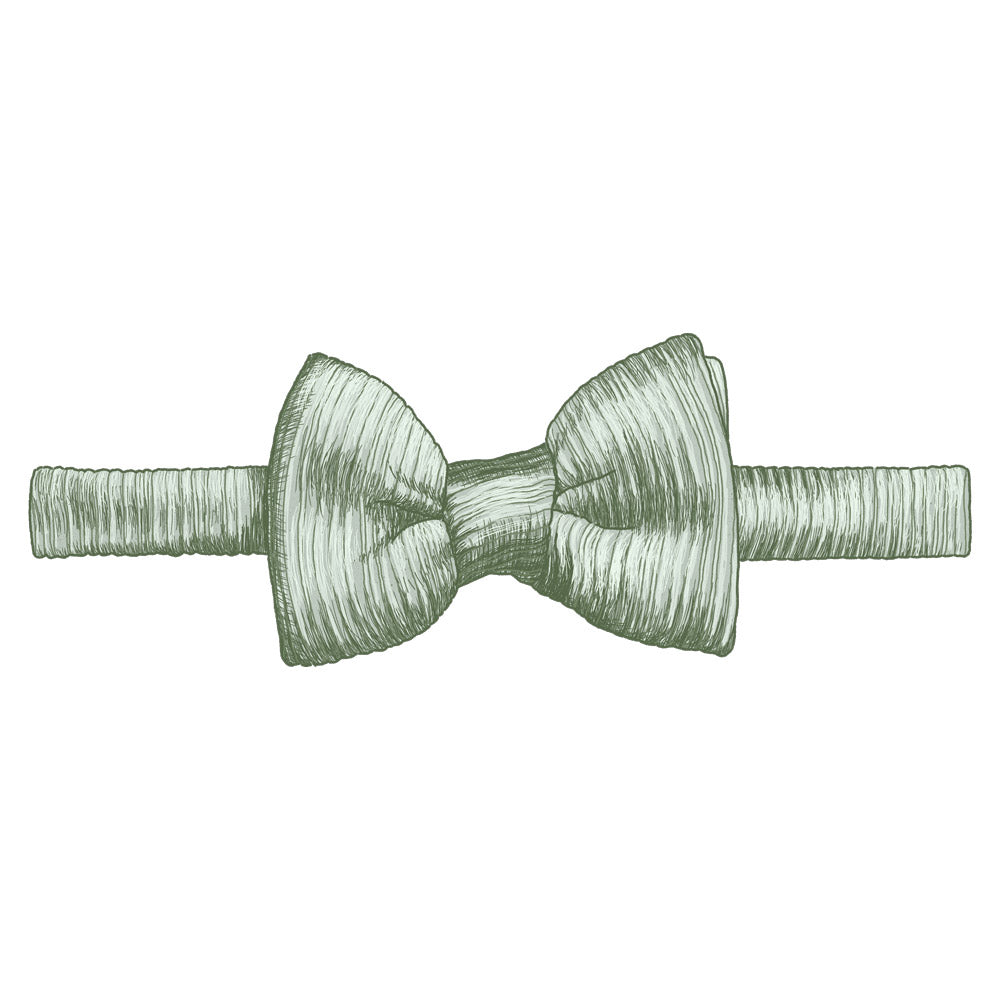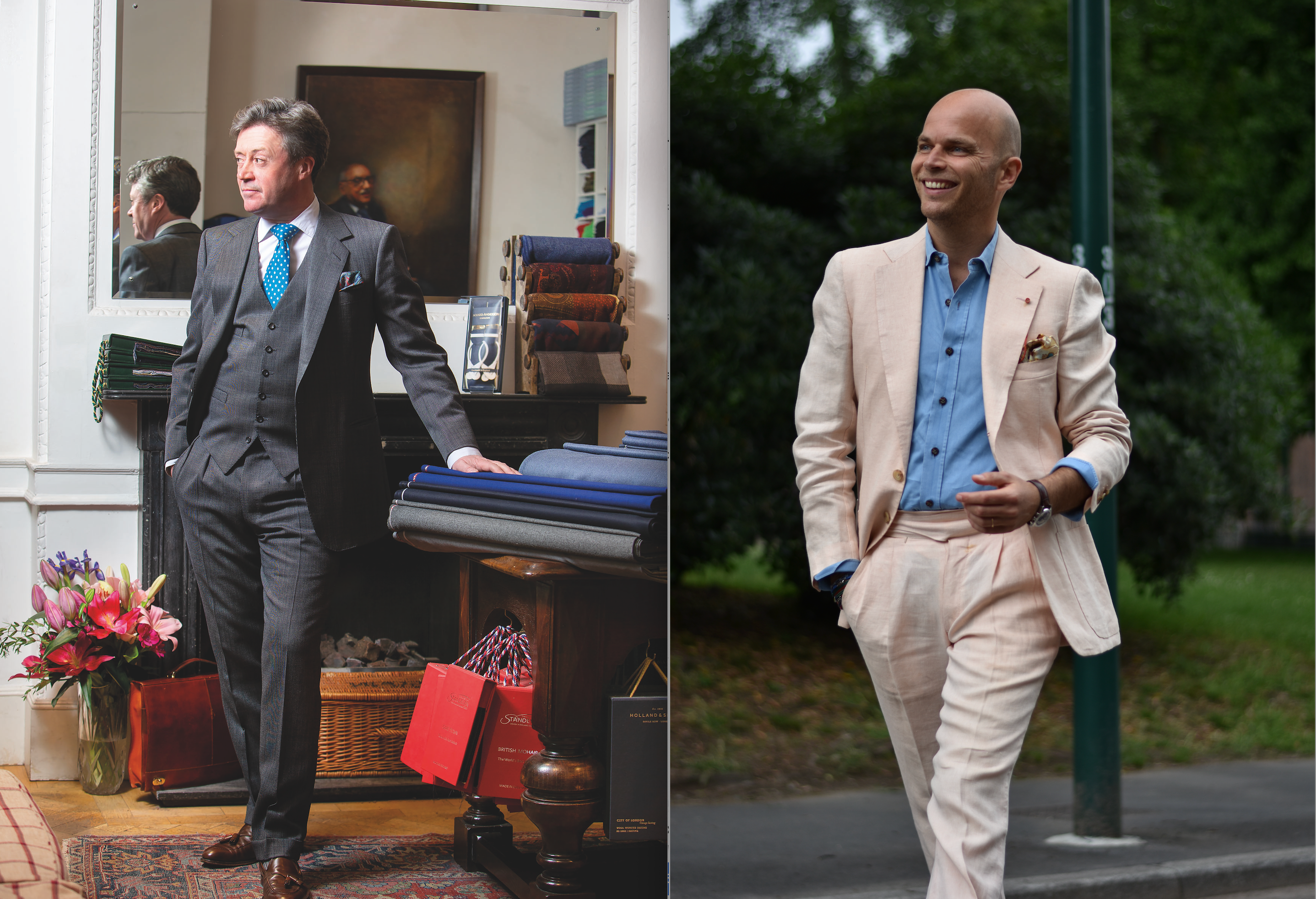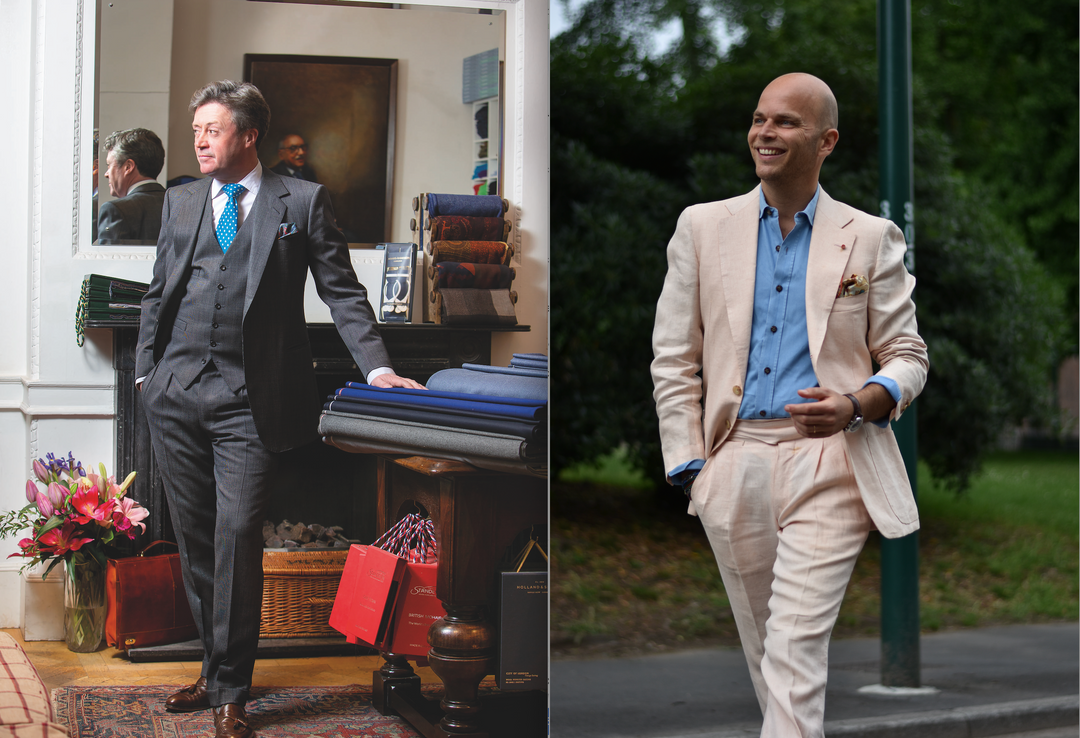Beatles or Stones? Cats or dogs? Mac or PC? Answers to such binary questions can provide much wider insights as to a person’s broader preferences and worldview. When it comes to ascertaining a new acquaintance’s style personality, though, a more pertinent question you can pose to them is: Savile Row or Neapolitan tailoring?
“Poole’s father was a military tailor making uniforms for the Napoleonic Wars,” explains the eternally affable Richard Anderson – Henry Poole’s neighbor, and the street’s only remaining tailor with his own name above the door. “The military styling Poole brought over became the basis for the Savile Row style of suiting: very close, form-fitting cuts; narrow, close to the leg; high armholes to help the wearer hold up weapons with ease; and, of course, structured shoulders – a phrase which refers to a more padded look with stiffer canvassing inside. If you look at the overall silhouette of this style, it’s conducive to standing to attention.”
One of Savile Row’s earliest and most influential regular visitors was Beau Brummel, the sartorial advisor to The Prince Regent. Brummel came up with the basic tenets of what we call a suit today, in the process ramping up the flamboyance and spearheading the dandy movement by introducing brighter, more colorful garments made of exotic materials like velvet. By and large, though, “martial-chic”, as one might call it, prevailed.
To this day Henry Poole makes ceremonial and livery uniforms, whilst down the road at Number 1, Gieves & Hawkes (whose historical customers include the Duke of Wellington and Lord Nelson) still provides scarlet uniforms, embellished with gold tassels and braided cord aiguillettes, to the King’s bodyguards. Huntsman, at Number 11, produced British officers’ uniforms during World War 1.
But it’s the subtle influences military apparel has had on the suits worn on “Civvy Street”, to borrow an English expression, that define classic London tailoring: think sharp lines, and an imperious silhouette provided – crucially – by structural components such as shoulder pads, wadding, chest canvas, and padding.
Neapolitan Tailoring
Now let’s move a couple of thousand kilometers to the south-east, to what is now Italy’s third largest city. Here, between the wars, despite a tailoring tradition going back several hundred years before Italy was even a country, Naples’ finest cutters and stitchers were making suiting largely similar to that devised, and popularized, by bespoke tailors in the British capital.
And then, in the 1930s, in the workshops of the British-inspired ‘London House’ belonging to Gennaro Rubinacci, sartorial history was made. A tailor called Vincenzo Attolini decided to create an unstructured version of the classic suit jacket, devoid of cumbersome linings and padding, and therefore better suited to the city’s balmy climes: “As light as the winds over Vesuvius”, as Neapolitan tailoring’s aficionados refer to it these days.
Over to Luca Rubinacci – who has been described as the “poster boy” the family’s tailoring legacy, and who these days runs the family atelier in Milan – for some broader context on the watershed moment that occurred in his grandfather’s workshop, in the south of the country – and why it came about.
“My grandfather’s customers weren’t in the financial business – they were men of leisure,” he says. “They needed clothing that was comfortable and nonchalant and had the quality that we now call ‘sprezzatura’. They required jackets suited not for business purposes, but purely to indulge in La Dolce Vita. These people wanted to show off the fact that they weren’t working.”
Rubinacci believes that Neapolitan tailoring “has more to do with the attitude and social station of the people who originally started wearing it than the weather”. He would surely agree, though, that Neapolitan jackets – with their 'camicia’ (shirt like) shoulders, generous lapels and ‘barchetta’ (boat-shaped) patch pockets on the chest – do, nearly a century on, look far more native to the promenades of Miami or the Riviera than they do the rain-splashed sidewalks of London.
Today, Rubinacci caters for all-comers. “We try to be flexible, he says. “Today we have Japanese, African, Middle Eastern customers – why should they have to go to London for winter suits, Naples for summertime suits? It’s about understanding diverse customer needs. That said, our Neapolitan traditions are an important part of our heritage and identity, and we will always cherish them.”
Heading back north, asked if he has a preference between the two, Anderson is characteristically diplomatic: “It’s fair to say that both schools – as long as they maintain respect for their traditions yet proactively try and shape the future of tailoring – will remain tailoring powerhouses for the foreseeable and way beyond.”
Perhaps most crucial to all, when it comes to Savile Row versus Neapolitan Tailoring, is that they’re not mutually exclusive. In keeping with the casual-chic vibe of Anatoly's native California, the suits you’ll find here are soft shouldered, with light fabrics atop half or full canvasses offering some nonchalant Neapolitan flare, but with a hint of that Savile Row formality about the cut making them look boardroom-friendly too.
After all, style isn’t about sticking to rigid rules – why not have the best of both worlds, when it comes to drape, silhouette, and comfort?
Savile Row Tailoring
To fully grasp the difference between the two, and why this sartorial dichotomy has so much influence on any lapelled jacket we care to wear today, we need to rewind a couple of centuries. Savile Row’s narrative – as a menswear hotspot, at least – begins in the mid-19th Century, when outfitter Henry Poole (later credited with the invention of the tuxedo) decided to make a back door out of his premises, leading on to what is now tailoring’s most famous thoroughfare, the main entrance.“Poole’s father was a military tailor making uniforms for the Napoleonic Wars,” explains the eternally affable Richard Anderson – Henry Poole’s neighbor, and the street’s only remaining tailor with his own name above the door. “The military styling Poole brought over became the basis for the Savile Row style of suiting: very close, form-fitting cuts; narrow, close to the leg; high armholes to help the wearer hold up weapons with ease; and, of course, structured shoulders – a phrase which refers to a more padded look with stiffer canvassing inside. If you look at the overall silhouette of this style, it’s conducive to standing to attention.”
One of Savile Row’s earliest and most influential regular visitors was Beau Brummel, the sartorial advisor to The Prince Regent. Brummel came up with the basic tenets of what we call a suit today, in the process ramping up the flamboyance and spearheading the dandy movement by introducing brighter, more colorful garments made of exotic materials like velvet. By and large, though, “martial-chic”, as one might call it, prevailed.
To this day Henry Poole makes ceremonial and livery uniforms, whilst down the road at Number 1, Gieves & Hawkes (whose historical customers include the Duke of Wellington and Lord Nelson) still provides scarlet uniforms, embellished with gold tassels and braided cord aiguillettes, to the King’s bodyguards. Huntsman, at Number 11, produced British officers’ uniforms during World War 1.
But it’s the subtle influences military apparel has had on the suits worn on “Civvy Street”, to borrow an English expression, that define classic London tailoring: think sharp lines, and an imperious silhouette provided – crucially – by structural components such as shoulder pads, wadding, chest canvas, and padding.
Neapolitan Tailoring
Now let’s move a couple of thousand kilometers to the south-east, to what is now Italy’s third largest city. Here, between the wars, despite a tailoring tradition going back several hundred years before Italy was even a country, Naples’ finest cutters and stitchers were making suiting largely similar to that devised, and popularized, by bespoke tailors in the British capital.And then, in the 1930s, in the workshops of the British-inspired ‘London House’ belonging to Gennaro Rubinacci, sartorial history was made. A tailor called Vincenzo Attolini decided to create an unstructured version of the classic suit jacket, devoid of cumbersome linings and padding, and therefore better suited to the city’s balmy climes: “As light as the winds over Vesuvius”, as Neapolitan tailoring’s aficionados refer to it these days.
Over to Luca Rubinacci – who has been described as the “poster boy” the family’s tailoring legacy, and who these days runs the family atelier in Milan – for some broader context on the watershed moment that occurred in his grandfather’s workshop, in the south of the country – and why it came about.
“My grandfather’s customers weren’t in the financial business – they were men of leisure,” he says. “They needed clothing that was comfortable and nonchalant and had the quality that we now call ‘sprezzatura’. They required jackets suited not for business purposes, but purely to indulge in La Dolce Vita. These people wanted to show off the fact that they weren’t working.”
Rubinacci believes that Neapolitan tailoring “has more to do with the attitude and social station of the people who originally started wearing it than the weather”. He would surely agree, though, that Neapolitan jackets – with their 'camicia’ (shirt like) shoulders, generous lapels and ‘barchetta’ (boat-shaped) patch pockets on the chest – do, nearly a century on, look far more native to the promenades of Miami or the Riviera than they do the rain-splashed sidewalks of London.
Today, Rubinacci caters for all-comers. “We try to be flexible, he says. “Today we have Japanese, African, Middle Eastern customers – why should they have to go to London for winter suits, Naples for summertime suits? It’s about understanding diverse customer needs. That said, our Neapolitan traditions are an important part of our heritage and identity, and we will always cherish them.”
Heading back north, asked if he has a preference between the two, Anderson is characteristically diplomatic: “It’s fair to say that both schools – as long as they maintain respect for their traditions yet proactively try and shape the future of tailoring – will remain tailoring powerhouses for the foreseeable and way beyond.”
Perhaps most crucial to all, when it comes to Savile Row versus Neapolitan Tailoring, is that they’re not mutually exclusive. In keeping with the casual-chic vibe of Anatoly's native California, the suits you’ll find here are soft shouldered, with light fabrics atop half or full canvasses offering some nonchalant Neapolitan flare, but with a hint of that Savile Row formality about the cut making them look boardroom-friendly too.
After all, style isn’t about sticking to rigid rules – why not have the best of both worlds, when it comes to drape, silhouette, and comfort?
